This article was reviewed by Steve Snedeker, professional landscaper.
Figuring out the best way to manage the leaves and plant debris in your landscaping can sometimes feel impossible. Do you want to switch things up in your garden but don't know what to do if leaves become a problem? Are there plants that don't mind tree and shrub debris?
Luckily, we've done some research and have these answers below!
For those with many falling leaves in their yard, there are many ideas to consider. A few of our favorites include:
- Growing a shade garden (plants like ferns don't mind leaves)
- Mulching below the trees and shrubs nearby
- Build a deck or patio, so it's easy to sweep away leaves
- Use rocks to create a leaf-friendly landscape
- Create a succulent garden where the leaves typically fall
- Build a compost bin where you can store extra leaves
As you can see, there are many options here. The key to handling excess tree foliage is creating a landscape below that can camouflage it or make the leaves easier to clean up.
Continue reading as we dive into how you can landscape a garden with many leaves. We're here to assist even if you don't have tons of trees but still run into debris problems. With that said, let's dive right into this topic!
![Autumn Leaves Falling From The Tree fall season, X Landscaping Garden Ideas For Where Many Leaves Fall [With Pictures To Inspire You!]](https://gardentabs.com/wp-content/uploads/2022/10/X-Landscaping-Garden-Ideas-For-Where-Many-Leaves-Fall-With-Pictures-To-Inspire-You.jpg)
How Do You Landscape A Garden With Many Leaves?
If you have trees throughout your garden, leaves are constantly falling. Although this is a part of life, too many leaves and debris from your trees can quickly become annoying.
As we said above, you do various things to try and solve this problem. Let's discuss each of them in greater detail below:
Growing A Shade Garden
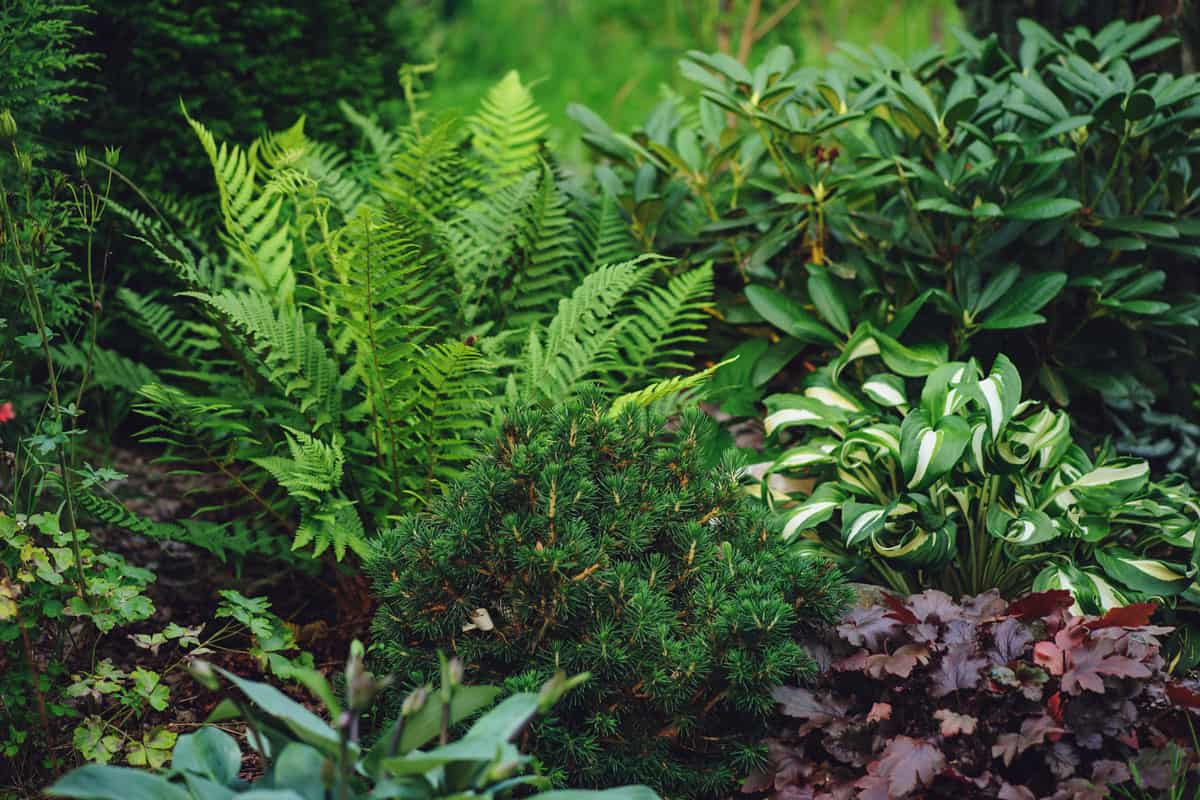
One way to combat excess leaves falling from your trees is planting shade-friendly plants below them. Generally, ferns and hostas will be the best option for catching leaves and have a great look.
Unlike planting regular annuals or perennials, a shade garden needs to be filled with plants that can handle a day or two without sun exposure and prefer a moister ground.
Furthermore, finding plant species that will camouflage your tree debris is helpful. For example, a fern is perfect for hiding if your tree sheds mainly green and brown leaves.
Hirt's Gardens Store Lemon Button Fern
This live fern is a lemon button variety, likes full shade, comes in a four-inch pot, smells like lemon, can grow outdoors in USDA zone 11, and stays under 12 inches tall.
Follow this link to view it on Amazon.
Mulching Below Your Trees/Shrubs
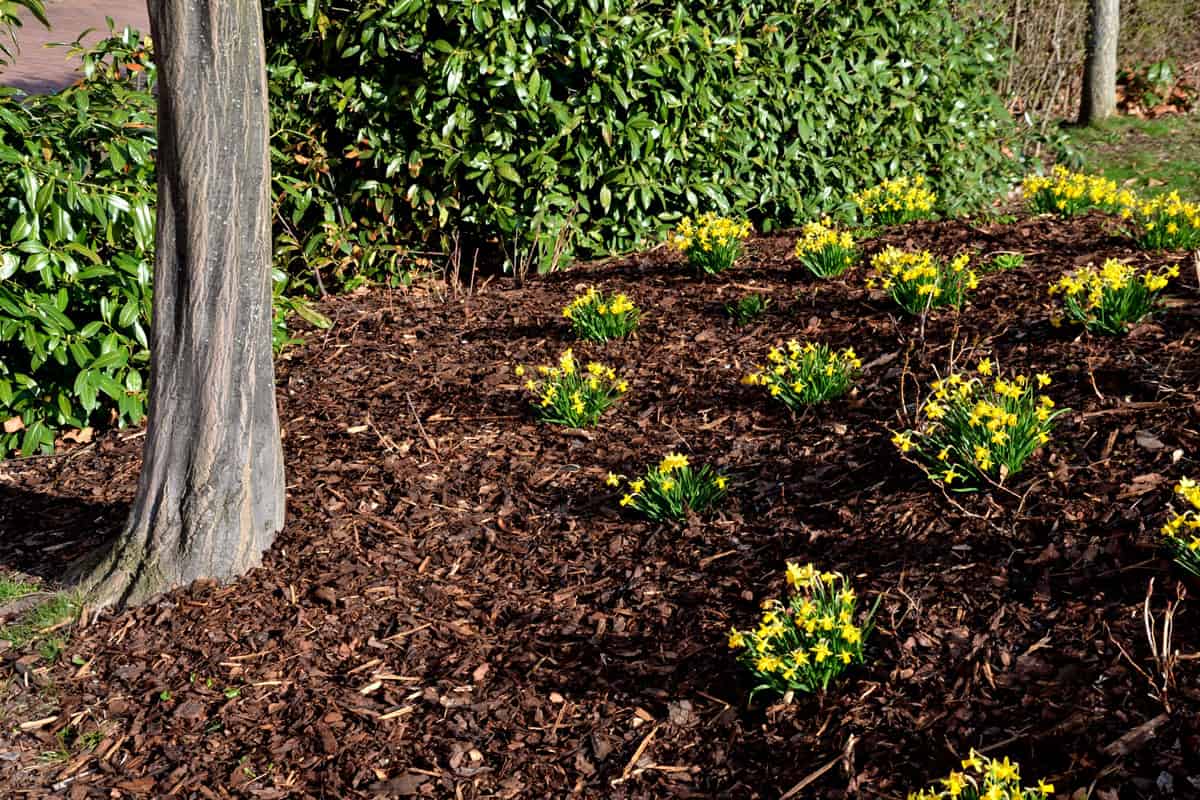
Another idea for landscaping a yard with many leaves is adding mulch. Generally, mulch does an excellent job of manicuring a space, even if it's prone to excess falling leaves.
You can apply mulch to entire sections of your garden or keep it right at the base of your plants, so there are various ways to do this. Furthermore, mulch is a great way to keep your plant's ground moist and beneficial in drought-prone places.
Many gardeners use colored mulch (red, orange, etc.) for their trees and larger shrubs to add a pop of color, so doing this can also help aesthetically.
MIGHTY109 Raging Red Colored Wood Chip Mulch
This mulch is red, made from natural wood, helps maintain soil moisture and temperature, creates an excellent ground cover to disguise tree debris, and comes in a 42-quart container.
Check out this red mulch on Amazon.
Build A Deck Or Patio
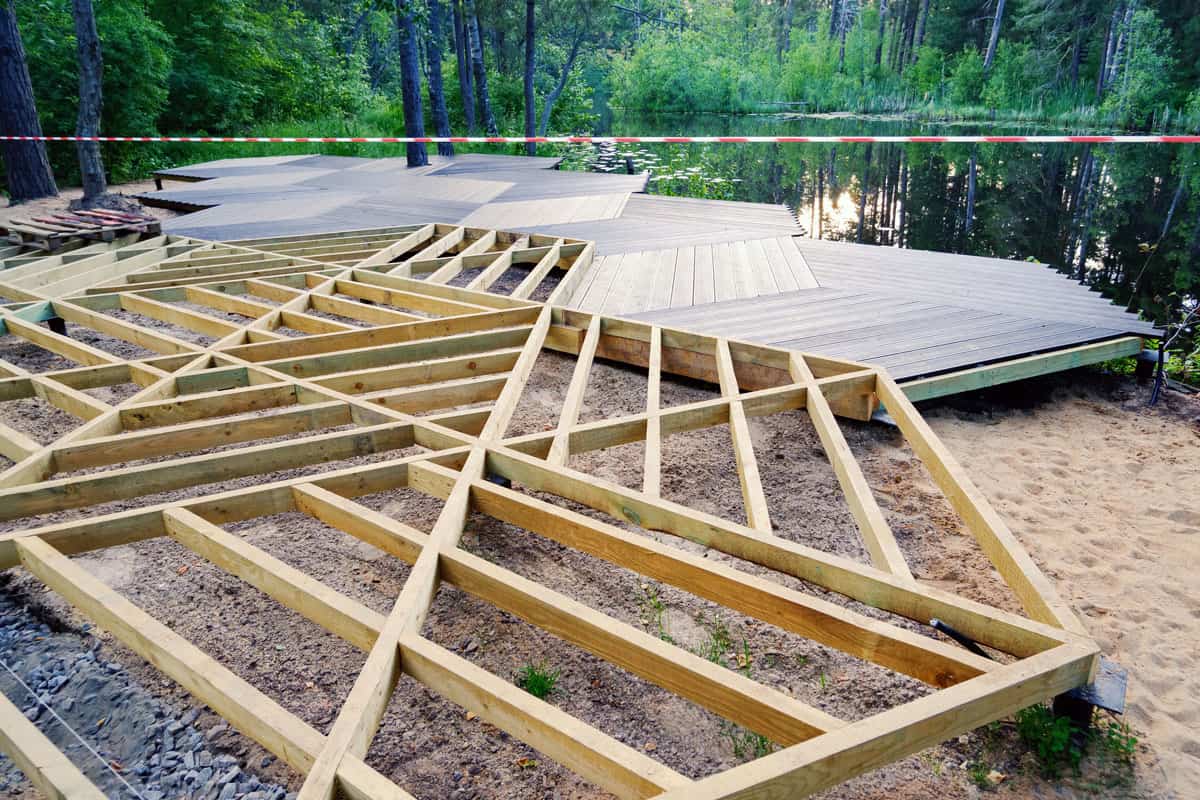
We recommend building a deck or patio in tree-filled landscapes for those who want to add extra living space to their garden. Besides adding property value, constructing a deck or patio outside under the trees can make cleaning the leaves easier.
Unlike tracking through your plants with a rake, you can turn on a leaf blower and clear your deck in as little as five minutes. Of course, that could mean leaves around the patio structure, but if your design is raised from the ground, you may not notice.
However, building a deck or patio will set you back roughly $20-$50 per square foot, so this can quickly become an expensive project.
Use Rocks For Your Landscaping
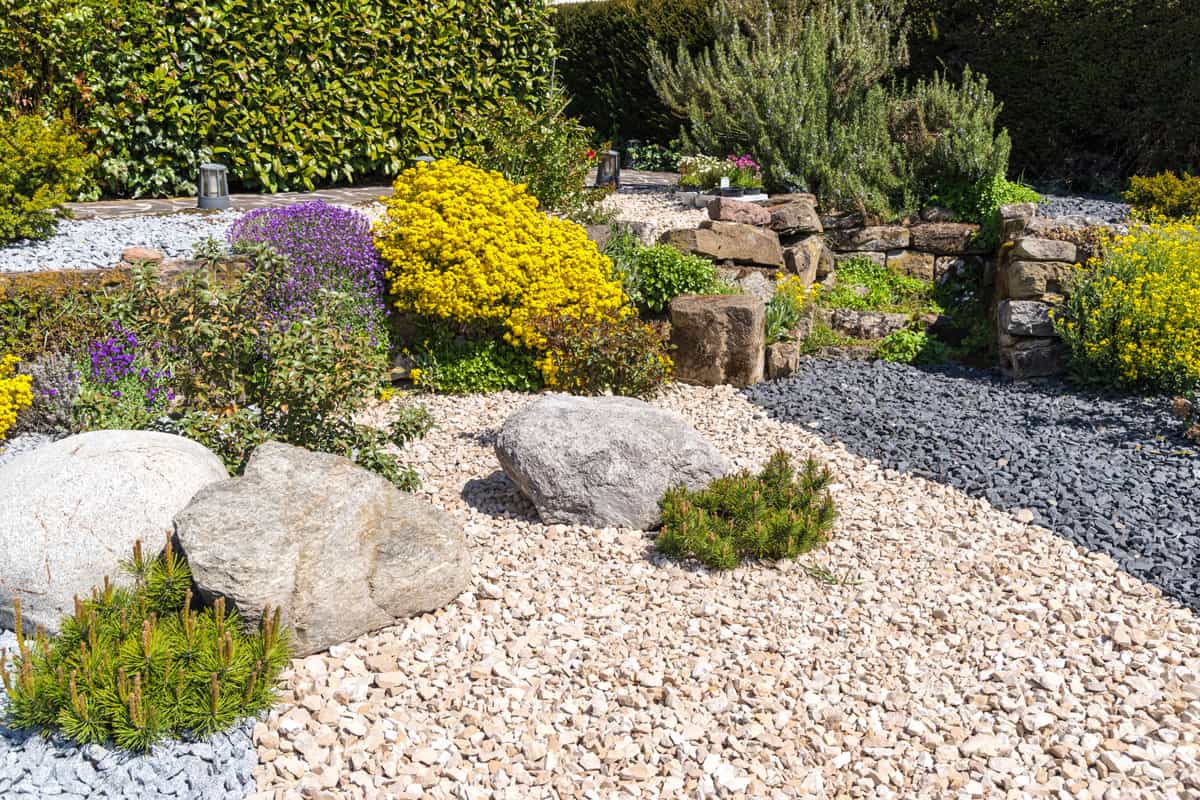
Our next suggestion for a leaf-filled landscape is to lay down rocks. Like mulch, you can use rocks to decorate the bases of your trees and keep the leaves at bay.
Using rocks can also help keep your soil from eroding, which saves you money on new potting mix later. Especially in desert landscapes, stones are often used to create designs and patterns around the yard, which is a unique way to handle this issue.
Remember, you don't always need to spend thousands to achieve a beautiful, well-maintained garden.
Create A Succulent Garden
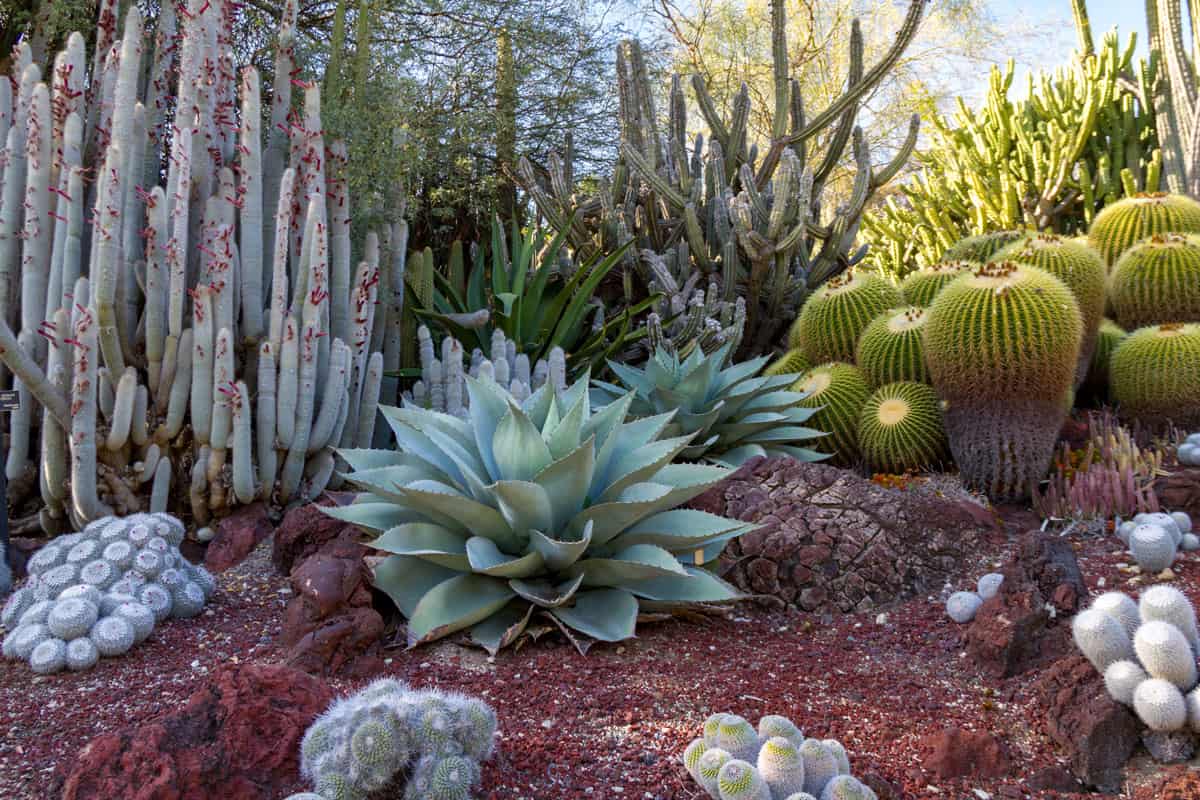
Sticking to a desert theme, you can also try and grow succulents in a landscape with many leaves. Generally, succulents are low-maintenance plants, often doing better without much care from you.
In addition, you can grow succulents almost anywhere, although you should plant them somewhere with at least partial shade. Unlike moss, ferns, or hostas, a succulent will enjoy the sun each day.
So, if your yard is filled with dense trees, this idea may not be ideal for you. The last thing you want to do is introduce gorgeous succulents to your landscape and have them die because there's no sun.
Live Succulents In Soil
These live succulents include ten unique plants, come in tiny pots, are fully rooted, can be grown indoors or outside, prefer partial shade to full sun, and have a satisfaction guarantee.
See these succulents on Amazon.
Build A Compost Bin
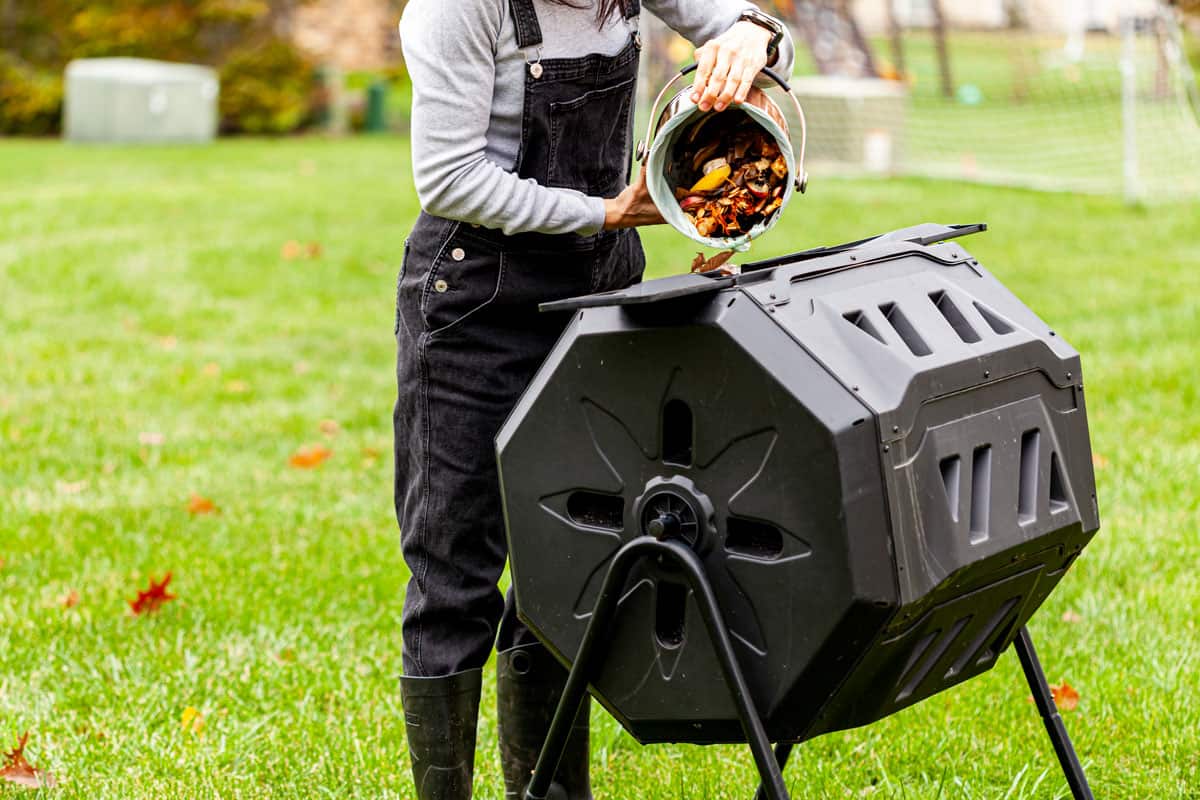
Our last idea for landscaping a yard with many leaves is building a compost bin. Although this may not be the most aesthetically-pleasing concept for some, compost bins have become staples for many people's gardens.
Suppose you have so many leaves sitting on the ground that you can't throw them away. With a compost bin, you can clear the foliage from your tree, place it inside, and eventually use it again for fertilizing your plants.
Typically, leaves, twigs, natural food scraps, etc., are perfect for composting. Doing this is also an easy way to save garbage bags and make your own fertilizer, so we think it's a win-win.
You can also purchase pre-built compost bins, so this doesn't always take much energy.
Miracle-Gro Small Composter
This compost bin fits smaller items, like leaves and tree debris, has a tumbling barrel design, holds 18.5 gallons, makes compost in 4-6 weeks, features a side-locking mechanism, and is BPA-free.
Follow this link to view it on Amazon.
How Do I Stop Leaves From Coming Into My Yard?
If you have a few trees but not enough to blame for the leaf invasion in your garden, there are some steps to take. Although you may have a few large trees in your landscape, that shouldn't be an excuse for the entire property to look messy.
As we said earlier, mulching or adding stones around the base of a tree is an easy way to control the spread. Since your tree will shed its older leaves and foliage, you want to trap it with mulch, etc.
In addition, building a fence could be your next best bet if you have neighbors with many trees. Typically, the more trees in one given space, the more hassle the fall season will become.
According to experts like Lawn Doctor, you can also use your lawn mower to run over these leaves, mixing them into your existing ground.
This is an easy way to feed the soil with nutrients and clean your garden, so we recommend it.
What Happens If I Don't Rake My Yard?
If you don't rake the leaves around your yard, expect it to look un-kept. Especially for those with grass, ignoring the leaves falling onto the ground can become a major issue.
For example, suppose you don't rake for a few weeks at a time. The leaves sitting on your grass can suffocate it, ultimately causing bald or sick grass blade patches.
In addition to suffocating your lawn, leaving debris on top of it can encourage pests and diseases. If a pest realizes you don't tend to your garden often, there's more of a chance they'll move in.
Therefore, we recommend trying to rake, mow, or landscape your garden in a way that catches leaves and keeps them from running wild.
Again, this can be as easy as adding mulch, rocks, or shade-tolerant plants to your landscape.
How Often Should I Rake The Leaves In My Garden?
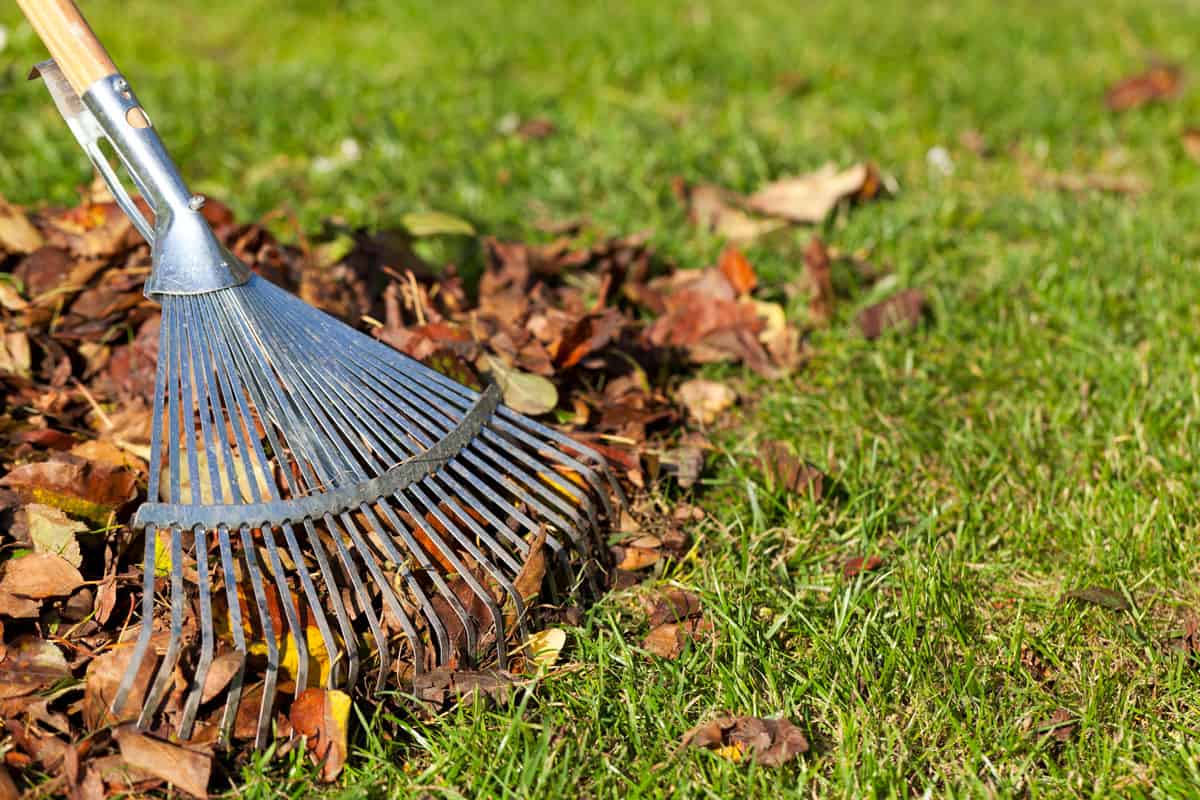
In general, you want to rake your garden as soon as enough leaves settle onto the ground for you to notice them. For example, if you see a large pile of leaves around one or more of your trees, grab a rake and get to work!
However, you don't need to tackle the entire yard in one sitting. Instead, focus on the more problematic leaves, especially the ones on your grass.
Furthermore, you can always grab a leaf blower and blow all the leaves into one section of your garden, making bagging or composting them easier.
To Wrap Up
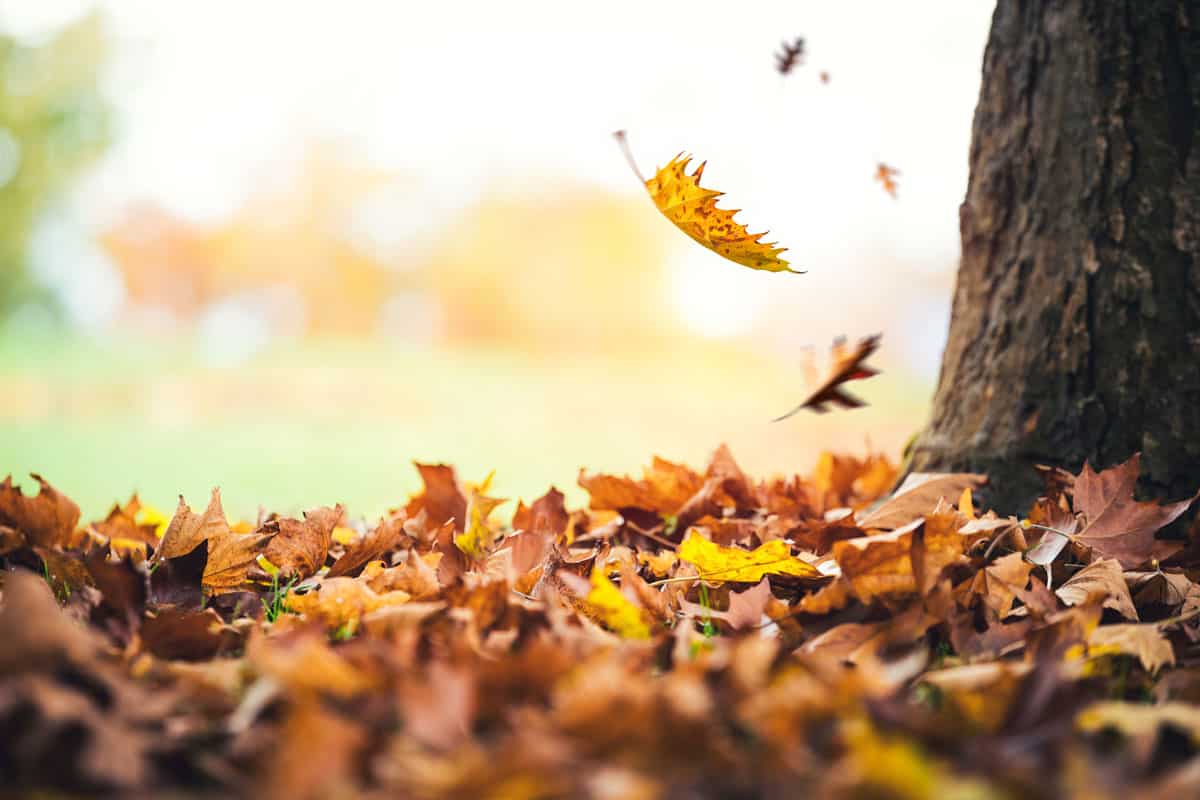
Finding new ways to handle leaves in the yard is always good, whether you live somewhere with plenty of trees or neighbors that don't clean up. From what we discovered, you can accomplish this in many ways.
For example, if you want to mulch or add stones to your garden, this can help control falling leaves and tree debris. Moreover, you can construct a fence or patio/deck structure, making finding and clearing foliage easier.
Regardless, try to work smarter, not harder, and don't be afraid to tackle your garden in sections over a week or two so you don't burn out.
Want to read more? Look no further!
Should I Cut The Dead Leaves Off My Peace Lily? [Inc. When And How To]




